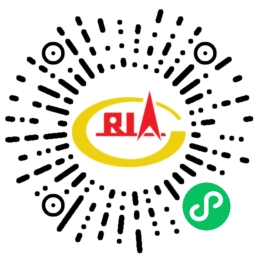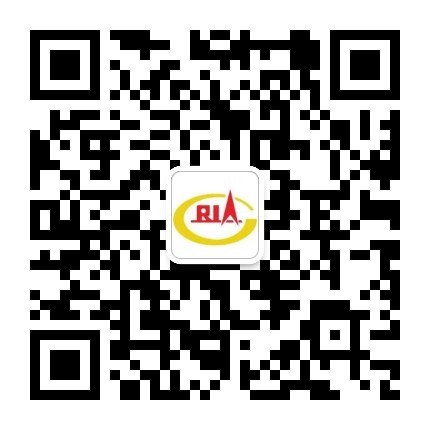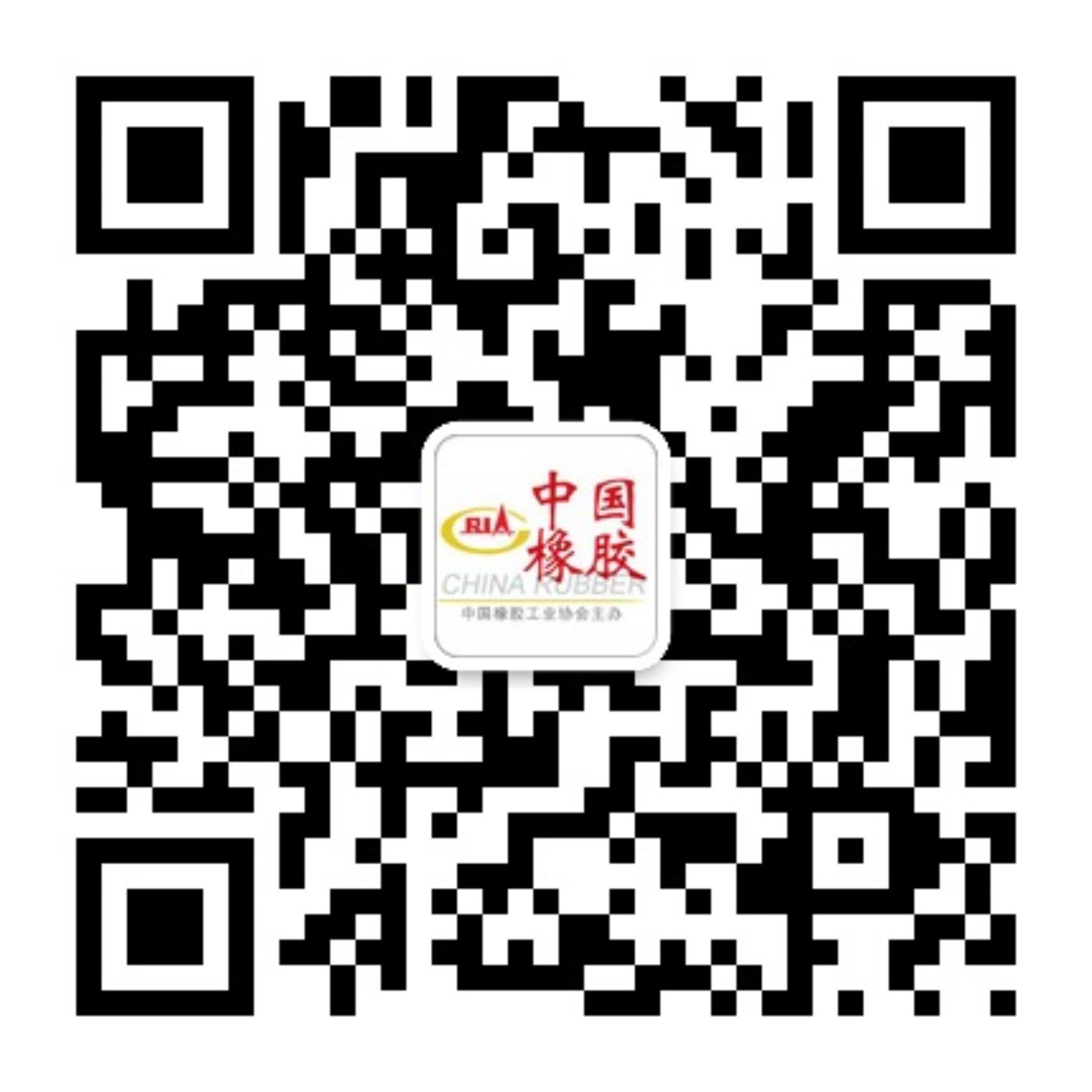“China’s comprehensive utilization of waste rubber industry shall see the irresistible trend in development, that is, safety, going green and environmental protection as well as intelligent development.” On June 28, on “2016 First National Technical Seminar on Green Utilization of Waste Rubber” held in Wuxi by China Rubber Industry Association (hereinafter referred to as CRIA) Comprehensive Utilization of Waste Rubber Branch, Xu Wenying, vice chairman and secretary general of CRIA, emphasized that the industry should pay attention to self innovation and the enterprises should pay attention to protection of proprietary intellectual property right.
Market of comprehensive utilization is broad
In 2015, China’s output of waste tires was about 330 million units and reached over 12 million tons, excluding millions of tons of waste rubber in other varieties such as scrapped rubber hoses & belts, cycle tires, rubber products, rubber shoes, etc.
According to the calculation of Comprehensive Utilization of Waste Rubber Branch, in 2015, the output of reclaimed rubber and rubber powder increased by 6.82% and 9.09% respectively compared with that in the same period of last year to reach 4.38 million tons and 0.60 million tons. Since 4.38 million tons of reclaimed rubber requires 3.70 million tons of rubber powder raw material, the total output of rubber powder in 2015 shall be 4.30 million tons. In Policy of Tire Industry issued by the Ministry of Industry and Information Technology in 2010, it is defined that reclaimed rubber is the third important rubber resource besides natural rubber and synthetic rubber to make up the shortage of China’s rubber resource. Cao Qingxin, secretary general of CRIA Comprehensive Utilization of Waste Rubber Branch, analyzed, “The above data shows that China has a large output of waste rubber, thus the raw materials are sufficient; the output of reclaimed rubber and rubber powder ranks first in the world at present and the demand is still increasing, thus the market is vast; and the requirements for product quality, going green and energy conservation, safety and environmental protection, etc. are also constantly increasing, thus breakthrough is urgently needed, and comprehensive utilization of waste rubber industry have bright prospects.”
“With the background of supply-side reform and increasing environmental protection pressure, environmental protection and energy conservation as well as green production is a severe challenge faced by comprehensive utilization of waste rubber industry as well as a realistic problem faced by each enterprise.” Gao Shixing, general manager of BESG Xingyu (Tangshan) Rubber & Plastics Eco-Technology Co., Ltd., said.
Yu Lin, chairman of Jiangsu Zhonghong Environmental Technology Co., Ltd., expressed in communication that the enterprises should keep pace with the times, innovate independently and base on environmental protection to organically combine the reclaimed rubber manufacturing technology with information technology and automation technology, to realize automatic weighing, automatic stirring, automatic conveyance, automatic desulfurization, automatic cooling and automatic blanking of rubber powder in the whole production chain and to realize online monitoring, follow- up and information management of each link, thus effectively realizing the labor-intensive to technology- intensive transformation and upgrading of reclaimed rubber industry and turning “manufacturing” to “smart manufacturing” to provide system solution for domestic and overseas industry services.
Innovative technology blooms
When introducing “environment friendly waste rubber desulfurization regeneration equipment” developed by it independently, Huang Xianghong, deputy general manager of Jiangsu Zhonghong Environmental Technology Co., Ltd., expressed that the company now possessed one intelligent and linked tire reclaimed rubber production line and one butyl particle reclaimed rubber production line, which could save energy by about 25% and reduce the labor cost by 50% for producing one ton of reclaimed rubber compared with the traditional process. The structural features of this equipment mainly include: adoption of fully- closed, continuous and anhydrous regeneration process. Among it, the central control modular combination mainly comprise five parts, automatic weighing and mixing system, compulsory quantitative feeding system, constant-temperature preheating regeneration system, pressure-regulating shearing and cooling system and automatic integrated control system. Intelligent control and remote operation: realize online Mooney real-time monitoring and single-point production process automatic control according to the practical experience and theoretical derivation of pressure control of regeneration end to ensure quality stability and consistency of reclaimed rubber. It is learned that Zhonghong was devoted to providing the customers with system solutions, with its equipment sold in Europe, Southeast Asia, the Middle East as well as multiple provinces and cities in China.
Tian Mingxu, general manager of Xinxiang Rubber and Plastic Industry Co., Ltd., introduced, “The company extends the innovation of reclaimed rubber mixing process based on research of automatic weighing batch-out equipment. In June 2015, the first automatic rubber mixing production line had its first pilot run, and in October, this production line was installed in all the rubber mixing process of this company to provide technical updating service for the same industry.” This complete automatic rubber mixing equipment includes: automatic quantitative loading, intelligent rubber turning and feeding back, continuous conveyance and kneading, automatic weighing and batch-off and touch display screen procedure control. Each production line (no matter three machines or four machines) only required one operator, with 6~8 operators (three shifts) reduced, and was easy and simple to operate and saved the human resources by 70%~80%, thus reducing the labor use and labor intensity of the workers. The whole rubber mixing process realized full automation; meanwhile, centralized computer control of multiple production lines could be realized, thus improving the safety. Since automatic weighing and batch-off machine was adopted and the time of the operator stopping roller for rubber cutting and batch-off was canceled, thus the output could be increased by about 10%; intelligent automatic rubber turning equipment was adopted, the rolling and mixing degree of each vehicle of rubber materials was even and reliable than artificial turning and mixing, thus the consistency was enhanced. From production site entering of rubber material to packaging and warehousing of rubber film, the whole production process realized no falling to the ground of semi-finished products and no mixing of foreign material.
Kong Rongsheng, chairman of Tiantai Kunrong Rubber Co., Ltd., said, “Since entering the reclaimed rubber manufacturing industry, through numerous explorations and trial and error, the company finally achieves breakthrough in normal temperature and pressure desulfurization equipment and formula as well as control technology. At present, with various indexes having reached or exceeded the national standard, series of reclaimed rubber products produced by normal temperature and pressure desulfurization equipment have been continuously and stably supplied to domestic large and medium-size enterprises such as Zhongce Group, Zhejiang Sanwei Rubber Co., Ltd., etc. This equipment saves manpower and is easy to overhaul and maintain, the products have stable quality and the fuel consumption is low, the fuel consumption of one ton of reclaimed rubber does not exceed 180KWH and the output of each hour is 600~800 kg. At present, the second generation of normal temperature and pressure desulfurization equipment with higher automation degree, more reasonable structural design and stronger processing capacity has entered the phase of pilot scale test and applied for patent.”
Bian Xiaojun, deputy general manager of Anhui Global Village New Materials Co., Ltd., introduced its “Waste Rubber High-value Utilization Demonstration Project - Waste Tire Intelligent Module Clean and Continuous Production Green Environment Friendly Crumb Reclaimed Rubber”. This technology selected 5~10mm rubber particles after crushing and separation of waste tire rubber as the raw materials, adopted integrated and adjustable thermochemistry- machinery regeneration method of special-structure screw regeneration equipment and had the aid of adding liquid materials such as water, liquid CO2, etc. in the processing area to finally obtain high-performance green and environment friendly reclaimed rubber. This project possessed four modules of green regeneration technology: automatic crushing and separation module, green desulfurization regeneration module, continuous purification and pelleting module and intelligent processing and packaging module. According to information, at present, the PhaseI Project with Annual Output of 50,000 Tons of Green and Environment Friendly Reclaimed Rubber under construction of this company is located in Ma’anshan City, Anhui Province, with a planned floor area of 156 mu and a building area of over 100,000 m2 . At present, the purchase of the production equipment and utility equipment processing 100,000 tons of waste tires and producing 50,000 tons of reclaimed rubber each year has been completed.
Professor Lyu Boyuan of Qingdao University of Science & Technology explained the “green and environment friendly integrated single-screw desulfurization technology”. He pointed out that integrated single-screw desulfurization technology referred to that the thermochemical function and mechanical and physical function worked in an integrated and simultaneous way during the desulfurization process; the desulfurization process and post-treatment process worked in an integrated and simultaneous way irrespective of sections; operation was carried out in an integrated and continuous way from mixing and batching → automatic feeding → desulfurization → post-treatment → cooling → packaging process. While green and environment friendly integrated single-screw desulfurization technology referred to that no water and steam were used during the desulfurization process, it was a dry desulfurization technology, thus there was no secondary pollution problem of water and steam; it adopted environment friendly compounding ingredients instead of using forbidden chemical compounding ingredients (such as coal tar) to produce environment friendly reclaimed rubber; it did not use two-roller rubber mixing mill during the post-treatment process, thus there was no escape of rubbing mixing tail gas (PM2.5); both the desulfurization process and post-treatment process (including linkage of the desulfurization process and post-treatment process) were carried out in a closed system, with no gas escape; the desulfurized reclaimed rubber was emitted through post-treatment, and the temperature of the reclaimed rubber was within the scope of 60°C~ 70°C , with no gas escape.
In addition, analyzed from operating cost of production line, Professor Lyu Baiyuan expressed: without investment in environmental protection equipment, the production line was simple and the equipment was easy to maintain and the quick-wear parts had low consumption; the floor area was small, the floor area of 3000 ton/year production line was about 130m2 (except for raw materials and finished products warehouse); only 2 operators were required by the production line, which saved the manpower by 60%~70% compared with the traditional production method, thus saving labor cost; the installed power of the production line engine and post-processor (3000 ton/year) was 55 KW, and the power consumption of the production line was about 320 ~ 360 KWH, with about 50% power consumption saved compared with the traditional desulfurization technology.
Professor Ren Dongyun of Beijing University of Chemical Technology introduced the “multi-level screw continuous desulfurization green manufacturing preparing particle reclaimed rubber complete technical equipment” in detail. He said, on the basis of environmental protection and energy conservation, his R&D team had a systematic and in-depth mechanism study on waste rubber desulfurization regeneration technology and Mooney-reducing technology, reasonably designed and developed screw extrusion desulfurization equipment and Mooney-reducing equipment for waste rubber desulfurization and realized from bench-scale test to pilot scale test up to industrialization through adjustment of process and formula.
As introduced by Ren Dongyun, as for their complete equipment with an annual output of 5000 tons of particle reclaimed rubber, there was no use of water in its technical formula, and the temperature rise and temperature drop for preparing desulfurized rubber powder with rubber powder was completed in airtight condition to solve the water pollution and air pollution generated during the traditional high-temperature reclaimed rubber production process; their Mooney- reducing equipment technology completed improvement of processing performance of desulfurized rubber powder and preparation of (particle) reclaimed rubber in airtight and low-temperature condition, thus solving the air pollution brought about by high-temperature strong shearing of traditional open refining mill. Multiple screw extruders were reasonably linked in series to complete the process of preparing reclaimed rubber with rubber powder, the desulfurization process only required 6~10 minutes and the Mooney-reducing process only required 3~5 minutes, that is, the whole preparation process could be completed within 15 minutes; the total energy consumption of desulfurization and Mooney- reducing process was about 650 KWH/ton, which was largely reduced compared with the energy consumption of 900 KWH/ton of traditional dynamic desulfurization technology.
“To make the reclaimed rubber enterprises reduce the production cost and improve the production efficiency, aiming at the change in production process of reclaimed rubber industry, production of fine reclaimed rubber requires rubber filtering, after which the refiner is used for rolling and sheeting. Rubber filtering and sheeting machine combines these two processes to directly sheet and mould on the rubber filter after rubber mixing.” Xu Xiao, general manager of Changzhou Sanxiang Machinery Co., Ltd., said when introducing “reclaimed rubber filtering and sheeting integrated technology”, “In this way, one refining and batch-off machine can be saved during production of reclaimed rubber, one set of conveyer device with power can be saved, at least one operator can be saved and one reclaimed rubber production line can save the production cost by 100,000 Yuan/year.”
Peng Shaoxin, senior engineer of original Beijing Rubber Research & Design Institute, brought about new thought to the industry when introducing “room temperature desulfurization rubber process”. He shared new achievements of prototype transformation of the recycled waste rubber with room temperature desulfurization system; safe to use, this product had low cost, short labor-hour and low energy consumption, thus providing more thoughts for diversified development of comprehensive utilization of waste rubber.
Foreign investment actively seeks for cooperation
Daniel Choi, general manager of Canadian Anxin Capital, analyzed “TYROMER continuous rubber desulfurization technology, i.e., super-critical carbon dioxide desulfurization”. Professor Costas Tzoganakis of University of Waterloo utilized inert super-critical carbon dioxide to accelerate the enlargement of rubber cross-linked network and used mechanical shearing to break sulfur bonds with priority to successfully realize desulfurization without chemical solvent, thus it was called super-critical carbon dioxide two-screw extrusion method reclaimed rubber desulfurization technology.
The advantages of this technology were mainly: no chemical solvent and no pollution on the environment; constant energy conservation; and reduction of carbon footprint. In the aspect of efficiency, it realized full-automatic continuous production and 2-minute quick desulfurization; and the rubber powder conversion rate reached 99%. In the aspect of benefit, it had low labor, production and maintenance cost as well as high profitability.
This technology had realized industrial production in Canadian Telematics Reclaimed Rubber Technology Co., Ltd., whose product Telematics reclaimed rubber possessed the following advantages: the composition of the material was same with that of the original rubber material; it conformed to North America and EU Material Safety Data Sheet (MSDS) standard; it had long shelf life of over 2 years and no offensive odor; it could be produced sustainably and had stable quality; it could adjust the Mooney viscosity and elongation; and adding of 20%~30% Telematics reclaimed rubber in rubber material of OTR could improve the main performance parameters. In addition, it could save 94% of the consumed energy for producing mixed rubber of tire.
Mr. Porter, production director of American ECO GREEN EQUIPMENT Company, introduced the automatic crushing equipment of this company. The crusher waste tire cyclic utilization system of this company (uniaxial machine or biaxial machine) could produce 2-inch rubber block and process 12~30 tons of waste tires per hour according to the customer demand. Among it, the abrasion cost of the biaxial machine was 1.94 dollars/ton, the dimension of the rubber block after steel wire separator was 16~38mm, the maximum capacity was 12 tons/hour and the abrasion cost was 3.55 dollars/ton. The pelletizer could produce 99% of wireless and firberless rubber particles with the dimension of 1~16 mm, the capacity was 24 tons/hour, 0.88 dollars/ton. ECO Krumbuster hydraulic flour mill of this company which had got a patent could produce rubber powder of a series of specifications according to the customer demand, which could be specifically refined to below 20 meshes, the maximum capacity was 1.5 tons/hour and the abrasion cost was 1.17 dollars/ton.
As reflected by the representatives present at the meeting, since the waste tires recycled at home and abroad had differences, for example, domestic bead wire was thicker than foreign bead wire, thus the efficiency of the crushing system would be reduced, relevant data of overseas-funded enterprises still required further negotiation and cooperation after actual test in China.
Innovation has a long way to go
As for the technical development direction of the industry, Cao Qingxin expressed that he suggested making the target for adjustment of industry structure, formulating encouragement, limitation and elimination catalog, gradually realizing transformation and upgrading, improving the technical level of the industry, realizing construction of innovative platform and conforming to the requirements of energy conservation and emission reduction. He predicted that in 2016, the environment friendly reclaimed rubber and rubber powder would increase by 5.02% and 8.33% on the basis of 2015 to reach about 4.60 million tons and 0.65 million tons.
Xu Wenying emphasized that for development, the enterprise should envisage self problems and face up to elimination to gradually realize transformation and upgrading based on self actual conditions, and reluctant maintenance had no way out.
Yu Lin, chairman of Jiangsu Zhonghong Environmental Technology Co., Ltd., expressed, “Along with popularity of environmental protection concept, green manufacturing and intelligent manufacturing are gradually changing the development trend of the industry. We are delighted to see that through joint efforts of the industry association and industry colleagues, the government successively introduces relevant supportive policies encouraging green and cyclic utilization of waste rubber, however, we still hope and call on the industry colleagues and association to continue to contribute suggestions to the government and relevant departments to strive for better environment and more policy support for transformation and upgrading of the industry.”




